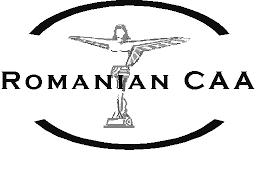The conference "Aviation Day in Romania", organized on April 12, a.c. by the International Air Transport Association (IATA) and the Romanian Civil Aviation Authority (AACR), marked the Romanian Presidency of the EU Council with valuable discussions on the transitional challenges of the international civil aviation industry.
In the presentations made by the members of the discussion group on many topics important to the aviation community, the need to put safety first was reaffirmed in the context of traffic that is expected to double by 2034. To achieve these goals, continue to work hard and strengthen cooperation to ensure the connectivity and resilience of the global aviation sector.
Another key point addressed at the conference was the need to maintain a balance across the European Union, in order to ensure that those countries with different rates of development benefit from the same trade, technological and air transit opportunities, regardless of their position. their geographical location.
Moreover, the Romanian CAA stressed the need to implement a predictive and holistic approach to cyber security in civil aviation, taking into account both the harmonization of national and international regulations and practical cooperation between all stakeholders and competent authorities.
The one present at the Conference decided that the fields of aviation security and safety should make joint efforts to build a proactive and reactive integrated framework in the field of civil aviation. Thus, efforts will be focused on correlating all approaches to cyber risk management, at national and international level. Every day, millions of people rely on the safety, security and resilience of airports, airlines and the systems that support them.
With regard to innovation and digitization efforts, the Presidents discussed the new challenges for airports, related to the growing number of passengers. There are already many international airports that have problems with their capacity, and in order to solve these challenges, it is necessary to develop and improve airport infrastructure.
Another topic discussed at the conference was related to the experience of passengers during their time at airports. In this sense, some solutions were presented to make the passengers' trip more enjoyable while they are at the airport.
These last two major needs could be addressed by introducing new technologies, such as: cloud computers, smart cars, autonomous systems, the Internet of Things, artificial intelligence, 5G technology, touch screens, virtual reality, augmented reality, which requires also adaptation efforts, to be carefully protected by appropriate cyber security measures.
The conference concluded that the airline industry and airports are in a process of transition, needing to introduce these new technologies to become more efficient, more environmentally friendly and to meet the expectations, needs and rights of passengers. .
With regard to passenger rights, the current issues raised by Regulation (EU) 261/2004 have been identified, as well as the work of the Commission, taking into account the problems faced by stakeholders, airlines and passengers.
